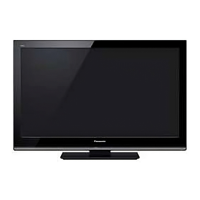
Do you have a question about the Panasonic Viera TH-L32X50Z and is the answer not in the manual?
| Screen Size | 32 inches |
|---|---|
| Resolution | 1366 x 768 |
| Display Type | LCD |
| HDMI Ports | 2 |
| USB Ports | 1 |
| HD Technology | HD Ready |
| Aspect Ratio | 16:9 |
| Refresh Rate | 50 Hz |
Safety guidelines for handling the power cord and plug to prevent electrical hazards.
Specifies the correct power source requirements and installation guidelines for the TV.
Warns against opening the TV casing due to electrical shock risk from high-voltage components.
Advises against exposing the TV to direct sunlight, heat, rain, or moisture.
Warning against inserting objects into TV vents and guidance on stable placement to prevent tipping.
Caution regarding small parts like SD cards and potential hazards for children.
Instructions for ensuring the TV is placed on a stable surface and protecting the display panel from impact.
Emphasizes the need for ventilation and safety during cleaning, including unplugging the TV.
Warning about potential hearing damage from excessively high headphone volume.
Lists the items included with the TV, such as remote control and batteries.
Details optional accessories available for purchase, like wireless LAN adaptors.
Information on the wall-hanging bracket, its specifications, and installation.
Crucial safety warnings and advice regarding the installation of wall-hanging brackets.
Step-by-step guide for attaching and removing the TV's pedestal safely and correctly.
Instructions on securing the TV to furniture to prevent it from falling over and causing injury.
Guide on how to correctly install and remove batteries in the remote control.
Detailed explanation of all buttons and functions on the TV remote control.
Identifies the physical control panel buttons and indicator lights on the TV.
Explains how to use the TV's on-screen menus and remote control for operation.
Describes the TV's feature for automatically entering standby mode after a period of inactivity.
Identifies and explains the purpose of all input/output terminals on the TV.
Instructions for connecting the power cord and the antenna cable to the TV.
Diagrams and instructions for connecting AV devices like DVD recorders, VCRs, and set-top boxes.
Steps for connecting the TV to a network using a LAN cable.
Instructions for setting up a wireless network connection using a LAN adaptor.
Detailed steps for connecting to a wireless network, including WPS and manual setup.
Steps to plug in the TV and turn it on for initial setup.
Guide to initiating the automatic channel search and storage process.
Instructions for configuring the wireless LAN connection during initial setup.
How to choose between 'Home' and 'Shop' viewing modes for optimal settings.
Steps to power on the TV and select between Digital or Analogue TV modes.
How to select channels using direct input or the channel list.
Explains how to freeze pictures and display subtitles.
How to set the TV to automatically turn off after a specified period.
How to view information about the current channel, programme, and available services.
How to change video, audio, subtitle, and volume settings for the current programme.
How to quickly switch to the previously viewed channel or input mode.
How to adjust the image aspect ratio for optimal viewing on the screen.
How to navigate and use the Electronic Programme Guide for viewing channel listings and programme information.
Explanation of FASTEXT and List modes, switching to teletext, and page selection.
How to use functions like revealing hidden data and calling up favourite pages in Teletext mode.
Using multi-window view, storing pages, viewing sub pages, and watching TV during updates.
How to access the menu for selecting external input sources.
Steps to select the desired input mode and view connected equipment.
How to display feature icons and select a desired feature.
Guide to following the operations for specific features like VIERA Link, Photo, Video, Music.
Steps to display, select menus, items, and adjust settings.
How to use the free input menu for entering names or numbers, including character entry.
Detailed settings for picture adjustments like Viewing Mode, Backlight, Contrast, Colour, and Sharpness.
Covers advanced settings for picture (Gamma, White Balance) and sound (Mode, Bass, Treble, Equaliser, etc.).
Explains various sound settings including audio language, MPX, SPDIF, HDMI input, and audio description.
Covers PC setup, DVI settings, Off Timer, Eco Navigation, Child Lock, channel tuning, and signal condition.
Covers display settings, VIERA Link configuration, system updates, network setup, and power saving options.
Steps to prepare for tuning by selecting TV mode and accessing the setup menu.
Guide to accessing and using the Digital TV tuning menu functions.
Guide to accessing and using the Analogue TV tuning menu functions.
Alternative method to perform Auto Tuning using the TV's side panel buttons.
How to create, edit, and manage favourite channel lists in Digital TV mode.
How to hide unwanted channels and edit channel positions or names.
Steps for performing auto tuning, manual tuning, and updating the channel list for Digital TV.
How to check the signal quality and strength for Digital TV channels.
How to manage analogue channels, skip unwanted ones, and edit names/positions.
Steps for performing auto tuning and manual tuning for Analogue TV channels.
Steps to access the Child Lock feature through the TV's setup menu.
How to set up channel locks, parental ratings, and manage the PIN number.
Guide to labeling input modes or skipping terminals for easier selection of input sources.
How to set the TV for automatic software updates while in standby.
Steps to manually search for and download new TV software versions.
Overview of Media Player function for enjoying photos, videos, and music from storage devices.
Instructions for correctly inserting and removing SD Cards and USB Flash Memories.
Steps to start Media Player, select content types (Photo, Video, Music), and change connected devices.
How to view photo thumbnails, sort them by folder or date, and display photo information.
How to view photos individually or in a slideshow, and access photo setup options.
Detailed settings for photo slideshows, including frame, effects, interval, repeat, and background music.
How to navigate video titles, view scenes, and play back content.
How to operate playback controls, set video preview, repeat, and confirm current status.
How to adjust audio selection, subtitles, aspect ratio, and SPDIF output settings.
How to play music files from folders or files, operate playback, and configure music mode settings.
Explanation of DLNA standards and how to set up a media server for network access.
Overview of network connection types and DLNA operational procedures.
Illustrates wired and wireless network connection setups, including direct connections.
Detailed steps for setting up a wired network connection, including IP/DNS settings.
Steps for setting up a wireless network connection, including connection type and testing.
How to select a media server and browse/select files (photos or videos) for viewing.
Details on how to perform playback for photos (single view, slideshow), videos, and music files.
How to configure settings for Photo, Video, and Music modes within Media Player.
Explains VIERA Link and HDAVI Control for interoperability with other Panasonic devices.
Overview table of features available when using VIERA Link with connected equipment.
Diagrams showing how to connect various external equipment using HDMI and audio cables.
Details on channel download, easy playback, power links, standby power save, and intelligent auto standby.
How to pause and resume live TV programmes, with instructions on operation.
How to record the current programme directly onto a connected DIGA Recorder.
How to operate connected equipment using the TV remote control via VIERA Link Control.
How to select between home cinema speakers and TV speakers using VIERA Link.
Table showing which external equipment can be connected to each TV terminal.
Details the pin assignments and functions for the HDMI terminal.
Diagrams illustrating connections for playback devices (VCR, DVD Player) and audio systems.
Diagrams showing connections for USB devices, camcorders, game equipment, PC, and network devices.
Information on channel frequencies and reception ranges for Analogue TV.
Explanation of the rating system used for Digital TV content.
How to select sound modes for Analogue TV broadcasts.
Technical specifications and connection guides for HDMI and DVI interfaces.
Information on connecting a PC, including supported signals and pin configurations.
Lists all supported input signal formats for Component, HDMI, and PC connections.
Information on SD card formats, USB memory, and supported file formats for photos and videos.
Lists supported video container formats, codecs, and music file types for media playback.
Details on DivX video playback, subtitles, registration, and content limitations.
Common network and USB connection errors, troubleshooting steps, and tested USB device combinations.
Troubleshooting common problems related to image quality, sound, and connectivity.
Solutions for problems with VIERA Link functionality and the 'Shop' mode appearance.
Explanation of pixel structure and common troubleshooting steps for various display issues.
Troubleshooting network connectivity, DLNA file selection, DTV channel issues, and picture pixelation.
Solutions for issues like pixelation, no signal, power, remote control, heat, panel movement, and error messages.
Details power, display, mass, sound, and reception system specifications.
Lists specifications for all connection terminals including HDMI, PC, USB, and Ethernet.
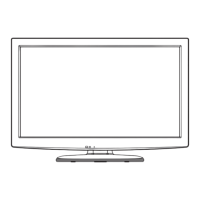
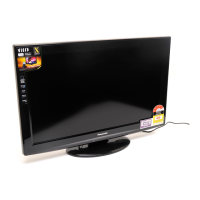
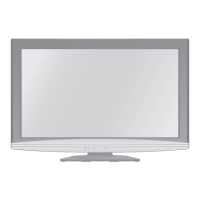

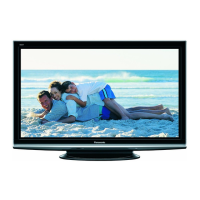
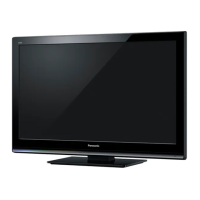
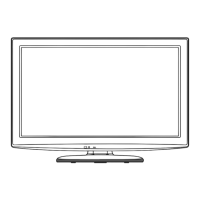

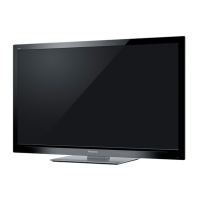
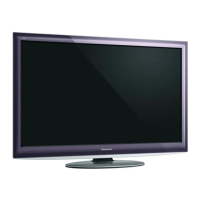
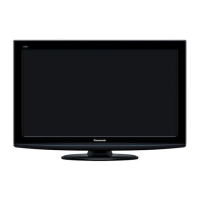
